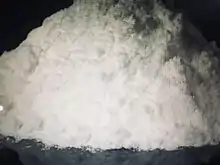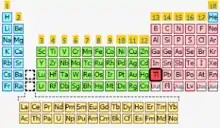What does it look, feel, taste, or smell like?
It's tasteless, no color, and no smell. It is malleable, limber, silver-colored and glossy. It tarnishes in air to the bluish-gray oxide.
How was it discovered?
English scientific expert William Crookes found Thallium spectroscopically in 1861. Both Crookes and French scientific expert Claude Auguste Lamy separated the component in 1862 indpendently.
Where did its name come from?
It was discovered by flame spectroscopy in 1861. Because Thallium has the colour bright green, scientists decided to give it the name Thallium, which comes from the Greek word θαλλός, 'thallos' , which means “a green shoot or twig”.
Did You Know?
- About 70% of thallium in the world were used for electronics devices
- Thallium is also used for investigate heart disease
- Thallium will produce a green color to a bunsen flame.
What are its uses?
Thallium is very poisonous. It is also used as one ingredient to make rat and insect poison popularly. Since 1972, this use was prohibited in the US for safety concerns. Some other countries conforming to this example in the following years. Thallium salt also have been used in curing people who have ringworm, other skin infections and to decrease the night sweat of tuberculosis patients. This use has been limited, for their restricted therapeutic index, and the evolution of enhanced drugs for these fettles.

Where is it found?
Thallium is a metal found in small amounts in soil
Is it dangerous?
Thallium compounds contain the element are very toxic because it is colorless, odorless, tasteless so it is very toxic when you contact with skin.
Thallium in periodic table
Thallium is on column 13, row 6.
